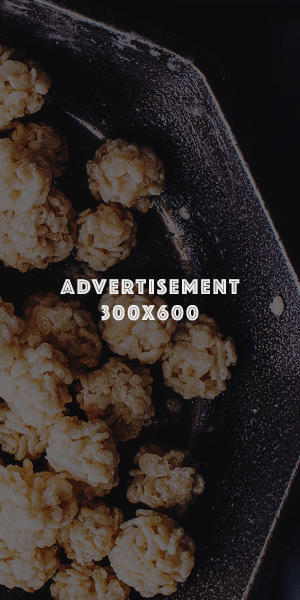Chocolate is popular amongst consumers of all ages. It is one of the most enticing desserts in the global food industry. These days, people are increasingly curious about food and taste. While wine and coffee are already being tasted, described and discussed in a rigorous and professional way, we lacked a language that did justice to the richness and complexity of chocolate experiences. Chocolate flavors are well-known for their high cocoa content. They are typically sweet, usually brown, and used as flavoring ingredients in various food & beverage preparations. It also offers the advantage of a nutritional profile with health benefits. It has the capability to lower blood pressure & cholesterol and decrease the risk of strokes. They are used extensively in baked food, dairy products, snacks, confectionery, and drinks. The difference between chocolate flavors is based on the type of cocoa bean, terrier, fermentation, roasting and conching, as well as the type and proportion of ingredients included in each chocolate formula. Real chocolate only has a short list of ingredients, so read labels carefully. Chocolate pairs well, with a wide range of flavors. Vanilla is the most frequent flavor pairing with chocolate.
Chocolate, a crave-able soothe food, has seen declines in consumer demand over the current year. So much that big chocolate companies have been forced to reduce staff and focus on greater modernization and solutions. How do you make chocolate better?
Several trends are impacting the chocolate industry-
- Premiumization is driving specialty products that are higher priced and promise better quality
- Natural and real ingredients are in demand requiring the elimination of artificial flavor and colors
- Fair trade practices are expected from younger consumers for suppliers to pay fair wages
- Spicy and Savory flavor trends are driving chili pepper, bacon and sea salt ingredient combinations
- Health and Wellness concerns are pushing manufacturers to reduce sugar and sodium content
- The cost of cocoa beans have been rising and consumers are very price sensitive to paying more for their chocolate which is squeezing margins and lowering demand especially in Europe.
A recent innovation by Barry Callebaut gives us Ruby, naturally pink chocolate, the first new assortment in 80 years. Pink chocolate isn’t new but what is new is that it has been shaped without using artificial coloring. This new innovation offers a berry flavor that is sole, and a less bitter, sour flavor that combines with the sweetness of chocolate.
The new chocolates likely will be considered a generation-defining product that is different from “what their parents eat.” The buzz alone from innovation will provide ample reason to sample the new product. Chocolate is still considered one of the world’s affordable indulgences and we should expect to see innovations.
Flavors in chocolates
Beyond essential vanilla, hazelnut and coffee, chocolate teams up well with almost any fruit flavor. Citrus flavors, like orange, lemon, grapefruit and lime are exceedingly becoming more popular. Fruits like mango and strawberry also getting admiration. Additional long-time chocolate flavors are caramel, mocha, coconut and cappuccino. In recent years, chocolate companies have become much more adventurous, and it is now common to see chocolate in mint, butterscotch and even more exotic flavors. Small batch chocolates with unique flavors are gaining popularity and can be easily found in specialty food stores and many grocery stores. Chocolate can be flavored with flavored oils too. These are commonly found in the baking aisle of grocery stores and include flavors like vanilla, almond, coconut, and lemon.
Advanced Equipment’s and process of making chocolate
During the process of chocolate making, roasted beans are crushed and the nibs are separated from the papery. After breaking and winnowing, the heavier nibs get separated in a container or separate compartment. The nibs are then ground down into liquid cocoa liquor and then makers add other ingredients and flavors, in order to create smooth and delicious chocolates. After the grinding and refining process, makers temper chocolates to give glossy look and to improve the texture and appearance. It is a slow process and the machine thereby takes time to accurately heat and cool down the chocolates. After making the chocolate, wrapping and packaging is the most important thing, as it plays a vital role in buying decision and also keeps the chocolates fresh.
Today, chocolate conching machine uses a simple roller to move and heat the chocolate and uses scrapper or paddle to stir up the liquid chocolate.
Market Scenario
Chocolate is uncontrollably popular for individual consumption as gifts. The supremacy of large-scale production dynasties, franchises and small businesses tend to focus on unique services and items. The requirement for cocoa is predicted to rise by 30% by 2020; the manufacturing is all set to ignite for a country like India. The upgraded consumer preferences like their lifestyle, eating habits and their overall exposure to global brands have led to elevated sales for the Indian chocolate industry, which registered a growth of 15% per annum from 2008 to 2012 and has grown at a CAGR of 23% by volume, between the years 2013-2022 and reached 3, 41,609 tons, according to a report designated, ‘India Chocolate Market Forecast & Opportunities, published by Tech-Sci Research.
Conclusion
Chocolate has always been the most favorite thing for every person and now the new flavored chocolates are slowly taking over the chocolate industry. One can now simply eat chocolates according to their mood and personal preferences for the flavor. Chocolate industry is rapidly growing and these new trends in the chocolate industry are going to result in a productive growth, for the flavored chocolates in the Indian Market.

